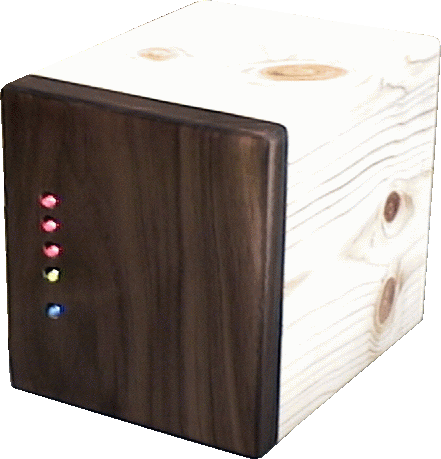TTL_PAPERS 960801 (August 1996)

Although TTL_PAPERS 951201 makes a nice, modularly scalable,
eight-processor TTL_PAPERS, there are a few annoying things about that
design which we have fixed in the TTL_PAPERS 960801 design. Of course,
every thing one fixes breaks something else.... So, here's what's new:
-
Eight machines typically fit in a rack, but a four-machine module size
seems much more convenient for handling and is less susceptible to
catastrophic problems from single-machine failures. So, 960801 is a
four-processor module. The bad news is that to connect eight machines
takes three units (each module has only one scaling connection), but
connecting 16 machines takes only five, etc.
-
Unlike the previous modular scalable designs, TTL_PAPERS 960801 is
easily scalable in the field. Basically, the top node in a
tree, or a stand-alone four-processor unit, takes a boardlet that
plugs into the DB25 scaling connector on the module board.
-
There is a lot to be said in favor of single-sided circuit boards, but
soldering the wires of each cable individually gets old pretty fast.
Further, as a practical matter, a large-scale system is much more
likely to encounter cable troubles that would require one or more
cables to be replaced... an insurmountable task with the 951201
design. Thus, TTL_PAPERS 960801 uses DB25 connectors for all cable
connections. The primary disadvantages are that the resulting board is
two-sided with hundreds of plated-through holes (kids: don't try to
make this at home), it is also several times larger than the other
four-processor TTL_PAPERS units, and cable and connector expenses are
non-trivial.
-
Although a topic of heated debate within our group, additional
circuitry (mostly pull-up resistors) was added to allow use of HCT
CMOS parts instead of LS TTL. The CMOS parts offer sharper, cleaner,
logic levels... but that also implies that they cause more switching
noise. In any case, you can use either family (or even mix them on a
single board). These pull-ups also mean that, unlike all other PAPERS
units, you'll see LEDs light when the PAPERS unit is connected but not
powered. Largely because of number of driver chips, this board draws
more power (supply should provide around 500 mA at 9 V).
That is enough power to make it a little hard to find an inexpensive
wall-mounted AC-to-DC adapter. Powering multiple boards from a single
OEM-style power supply is thus more appropriate.
-
The board is designed to slide into the case (which in the photo has a
walnut front panel ;-). This avoids fancy mounting hardware and makes
it very easy to change cable connections.
In summary, this four-processor design is not really worthwhile if all
you want to connect is four or eight machines. However, if you expect
to have a lot more than four, and/or to incrementally add more
machines, this is the design you want.
 The only thing set in stone is our name.
The only thing set in stone is our name.

